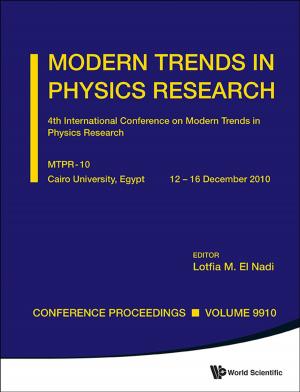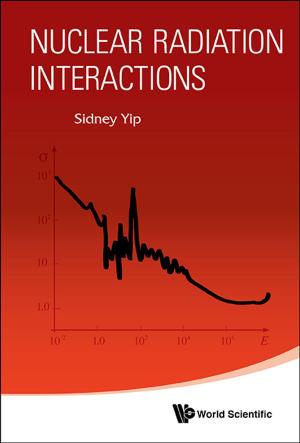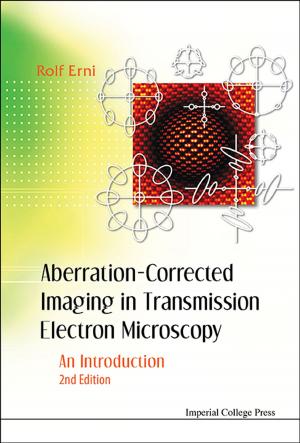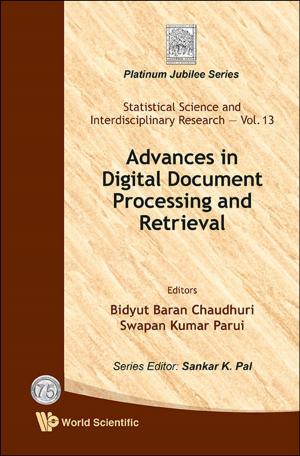Beam Dynamics in High Energy Particle Accelerators
Nonfiction, Science & Nature, Science, Other Sciences, Scientific Instruments, Physics, Mathematical Physics| Author: | Andrzej Wolski | ISBN: | 9781783262793 |
| Publisher: | World Scientific Publishing Company | Publication: | January 21, 2014 |
| Imprint: | ICP | Language: | English |
| Author: | Andrzej Wolski |
| ISBN: | 9781783262793 |
| Publisher: | World Scientific Publishing Company |
| Publication: | January 21, 2014 |
| Imprint: | ICP |
| Language: | English |
Particle accelerators are essential tools for scientific research in fields as diverse as high energy physics, materials science and structural biology. They are also widely used in industry and medicine. Producing the optimum design and achieving the best performance for an accelerator depends on a detailed understanding of many (often complex and sometimes subtle) effects that determine the properties and behavior of the particle beam. Beam Dynamics in High Energy Particle Accelerators provides an introduction to the concepts underlying accelerator beam line design and analysis, taking an approach that emphasizes the elegance of the subject and leads into the development of a range of powerful techniques for understanding and modeling charged particle beams.
Contents:
-
Electromagnetism and Classical Mechanics:
- Electromagnetic Fields in Accelerator Components
- Hamiltonian for a Particle in an Accelerator Beam Line
-
Single-Particle Linear Dynamics:
- Linear Transfer Maps for Common Components
- Linear Optics in Uncoupled Beam Lines
- Coupled Optics
- Linear Imperfections in Storage Rings
- Effects of Synchrotron Radiation
-
Single-Particle Nonlinear Dynamics:
- Examples of Nonlinear Effects in Accelerator Beam Lines
- Representations of Transfer Maps
- Symplectic Integrators
- Methods for Analysis of Single-Particle Dynamics
-
Collective Effects:
- Space Charge
- Scattering Effects
- Wake Fields, Wake Functions and Impedance
- Coherent Instabilities
Readership: Undergraduate students who are looking for an introduction to beam dynamics, and graduate students and researchers in the field.
Key Features:
- Basic ideas are introduced from the start using an approach that leads logically into the development of more advanced concepts and techniques. In particular, linear dynamics is treated consistently using a Hamiltonian formalism, which provides a suitable foundation not only for perturbation theory, but also for more modern techniques based on Lie operators. The use of a consistent approach makes the progress from introductory to advanced material as straightforward as possible
- The treatment of nonlinear dynamics using Lie operators provides a number of powerful techniques for the analysis of accelerator beam lines. Lie operators are generally found only in more advanced and specialized treatments of nonlinear dynamics. Beam Dynamics in High Energy Particle Accelerators provides an accessible introduction to the subject, and illustrates the use of techniques such as Lie transforms and normal form analysis through examples of particular relevance for beam dynamics
- As well as providing a clear description of the important topics in beam dynamics and an explanation of the physical principles, attention is given to techniques of particular importance for computer modeling of beam dynamics. For example, there is a chapter on symplectic integration that gives explicit formulae for methods that are of some importance in accelerator modeling codes, but have not previously been presented in a book of this kind
Particle accelerators are essential tools for scientific research in fields as diverse as high energy physics, materials science and structural biology. They are also widely used in industry and medicine. Producing the optimum design and achieving the best performance for an accelerator depends on a detailed understanding of many (often complex and sometimes subtle) effects that determine the properties and behavior of the particle beam. Beam Dynamics in High Energy Particle Accelerators provides an introduction to the concepts underlying accelerator beam line design and analysis, taking an approach that emphasizes the elegance of the subject and leads into the development of a range of powerful techniques for understanding and modeling charged particle beams.
Contents:
-
Electromagnetism and Classical Mechanics:
- Electromagnetic Fields in Accelerator Components
- Hamiltonian for a Particle in an Accelerator Beam Line
-
Single-Particle Linear Dynamics:
- Linear Transfer Maps for Common Components
- Linear Optics in Uncoupled Beam Lines
- Coupled Optics
- Linear Imperfections in Storage Rings
- Effects of Synchrotron Radiation
-
Single-Particle Nonlinear Dynamics:
- Examples of Nonlinear Effects in Accelerator Beam Lines
- Representations of Transfer Maps
- Symplectic Integrators
- Methods for Analysis of Single-Particle Dynamics
-
Collective Effects:
- Space Charge
- Scattering Effects
- Wake Fields, Wake Functions and Impedance
- Coherent Instabilities
Readership: Undergraduate students who are looking for an introduction to beam dynamics, and graduate students and researchers in the field.
Key Features:
- Basic ideas are introduced from the start using an approach that leads logically into the development of more advanced concepts and techniques. In particular, linear dynamics is treated consistently using a Hamiltonian formalism, which provides a suitable foundation not only for perturbation theory, but also for more modern techniques based on Lie operators. The use of a consistent approach makes the progress from introductory to advanced material as straightforward as possible
- The treatment of nonlinear dynamics using Lie operators provides a number of powerful techniques for the analysis of accelerator beam lines. Lie operators are generally found only in more advanced and specialized treatments of nonlinear dynamics. Beam Dynamics in High Energy Particle Accelerators provides an accessible introduction to the subject, and illustrates the use of techniques such as Lie transforms and normal form analysis through examples of particular relevance for beam dynamics
- As well as providing a clear description of the important topics in beam dynamics and an explanation of the physical principles, attention is given to techniques of particular importance for computer modeling of beam dynamics. For example, there is a chapter on symplectic integration that gives explicit formulae for methods that are of some importance in accelerator modeling codes, but have not previously been presented in a book of this kind















